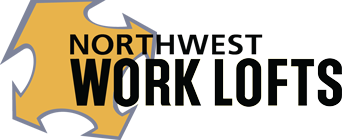Transportation and Accessibility of Seattle: A Comprehensive Guide to Public Transit, Bike Routes, and Highways
Seattle stands as a beacon of modern urban transportation, offering a well-integrated public transit system, extensive bike lanes, and key highways that cater to commuting professionals. The city’s public transit system, operated by King County Metro and Sound Transit, provides reliable and extensive coverage across the metropolitan area. This ensures that professionals can easily navigate the city without reliance on personal vehicles.
Cycling enthusiasts will appreciate Seattle’s commitment to bike-friendly infrastructure. With an expanding network of dedicated bike lanes, the city promotes a healthy, eco-friendly alternative for commuting. Major routes such as the Burke-Gilman Trail provide seamless connectivity to business districts.
Highways such as I-5 and I-90 facilitate efficient travel to and from the city, making Seattle accessible from neighboring areas. This combination of transit options underscores why Seattle is a model city for transportation and accessibility.
Public Transit System in Seattle
Seattle boasts a robust public transit landscape, featuring a light rail system, extensive bus networks, streetcars, and water-based transit options. These services aim to provide efficient and accessible means for residents and visitors to navigate the city.
Link Light Rail: Connecting Neighborhoods
The Link Light Rail spans multiple neighborhoods, offering a key transit option for commuters between Northgate, Downtown Seattle, and Sea-Tac Airport. This service runs at frequent intervals, especially during peak hours, reducing wait times to as little as 6 minutes.
Stations are strategically located near popular landmarks, shopping areas, and employment hubs. Furthermore, capital development projects are underway to extend the line to reach Lynnwood and Federal Way, promising even greater coverage.
Accommodations for bikes and luggage make it a convenient choice for travelers, ensuring ease of access for all passengers.
Bus Services: Metro Transit and Sound Transit
Metro Transit and Sound Transit are the primary providers of bus services in Seattle. Metro Transit operates local routes, while Sound Transit covers regional routes, connecting various cities in the Puget Sound region.
With high-frequency routes, many buses run every 10-15 minutes during peak hours. RapidRide lines offer limited stops for faster travel. Equipped with real-time tracking systems, riders can stay informed about arrival times.
Bus routes also integrate seamlessly with other transit systems like the Link Light Rail, allowing for smooth transfers. Wheelchair accessibility and bike racks cater to diverse commuter needs, further enhancing the user experience.
Seattle Streetcar: Integrating Urban Transit
Seattle’s Streetcar network includes the South Lake Union and First Hill lines. These streetcars connect key areas within the downtown core, providing an additional layer to the city’s transit systems.
Operating every 10-15 minutes, streetcars offer a leisurely alternative for navigating the city. They are particularly beneficial for short trips and connect with other modes of transportation such as Link Light Rail and Metro buses.
The streetcars are designed to be accessible with level boarding and enough space for wheelchairs and strollers.
Water Taxis and Ferries: Waterfront Commutes
King County Water Taxi and Washington State Ferries offer water-based transit options, serving commuters and visitors traveling to and from waterfront locations.
The Water Taxi operates from West Seattle and Vashon Island to downtown Seattle, making it ideal for avoiding road congestion. Washington State Ferries extend further, connecting Seattle to Bainbridge Island, Bremerton, and other destinations.
Vessels are equipped with bike racks, and some even offer passenger amenities like free Wi-Fi and snack bars. These services operate on frequent schedules, ensuring reliable transportation. Ample seating and scenic views provide a pleasant travel experience.
Road Networks and Bike Paths
Seattle’s transportation infrastructure includes a complex road network and an extensive array of bike paths. These components work together to support commuting professionals, fostering efficient travel and safe cycling.
Major Highways for Efficient Travel
Seattle is serviced by several major highways that facilitate efficient travel throughout the city and its surrounding areas. Interstate 5 (I-5) runs north-south through Seattle, serving as a primary route for commuters and connecting to other major cities. Interstate 90 (I-90) provides an east-west corridor, linking Seattle with eastern Washington and beyond.
State Route 520 (SR 520) offers another crucial east-west link, including the Evergreen Point Floating Bridge, which is a key connection to the tech hubs on the east side of Lake Washington. The region is also served by State Route 99 (SR 99), which runs parallel to I-5 and passes through the downtown area via the Alaskan Way Viaduct Replacement Tunnel.
These highways are integral for daily commutes, freight transport, and access to various neighborhoods and suburbs.
Bicycle-Friendly Streets: Safety and Infrastructure
Seattle has developed numerous bicycle-friendly streets, prioritizing safety and accessibility for cyclists. Protected bike lanes are prevalent, separating cyclists from vehicular traffic with physical barriers. These lanes are found on key roads such as 2nd Avenue and Broadway.
In addition to protected lanes, greenways—residential streets with low traffic volumes—are designed to be safe for cyclists. Greenways often feature reduced speed limits, traffic calming measures, and clear signage to guide cyclists.
Bike racks and public bike repair stations are scattered throughout the city, ensuring cyclists have the amenities they need. The Seattle Department of Transportation (SDOT) continually works on expanding and improving these infrastructures to support the growing number of bike commuters.
Pedestrian Walkways and Accessibility
Pedestrian accessibility in Seattle is enhanced by a robust network of walkways and pathways. Sidewalks are found on most city streets, making it easy for pedestrians to navigate urban areas. Crosswalks are clearly marked and often include pedestrian signals to ensure safe crossing.
Trail systems, such as the Burke-Gilman Trail, provide continuous walking pathways that connect neighborhoods and parks. These trails are designed for both recreational and commuting purposes, backed by well-maintained surfaces and safety measures.
For individuals with disabilities, Seattle focuses on compliance with the Americans with Disabilities Act (ADA). Features like curb ramps and tactile paving at intersections ensure that sidewalks are accessible to all citizens.
